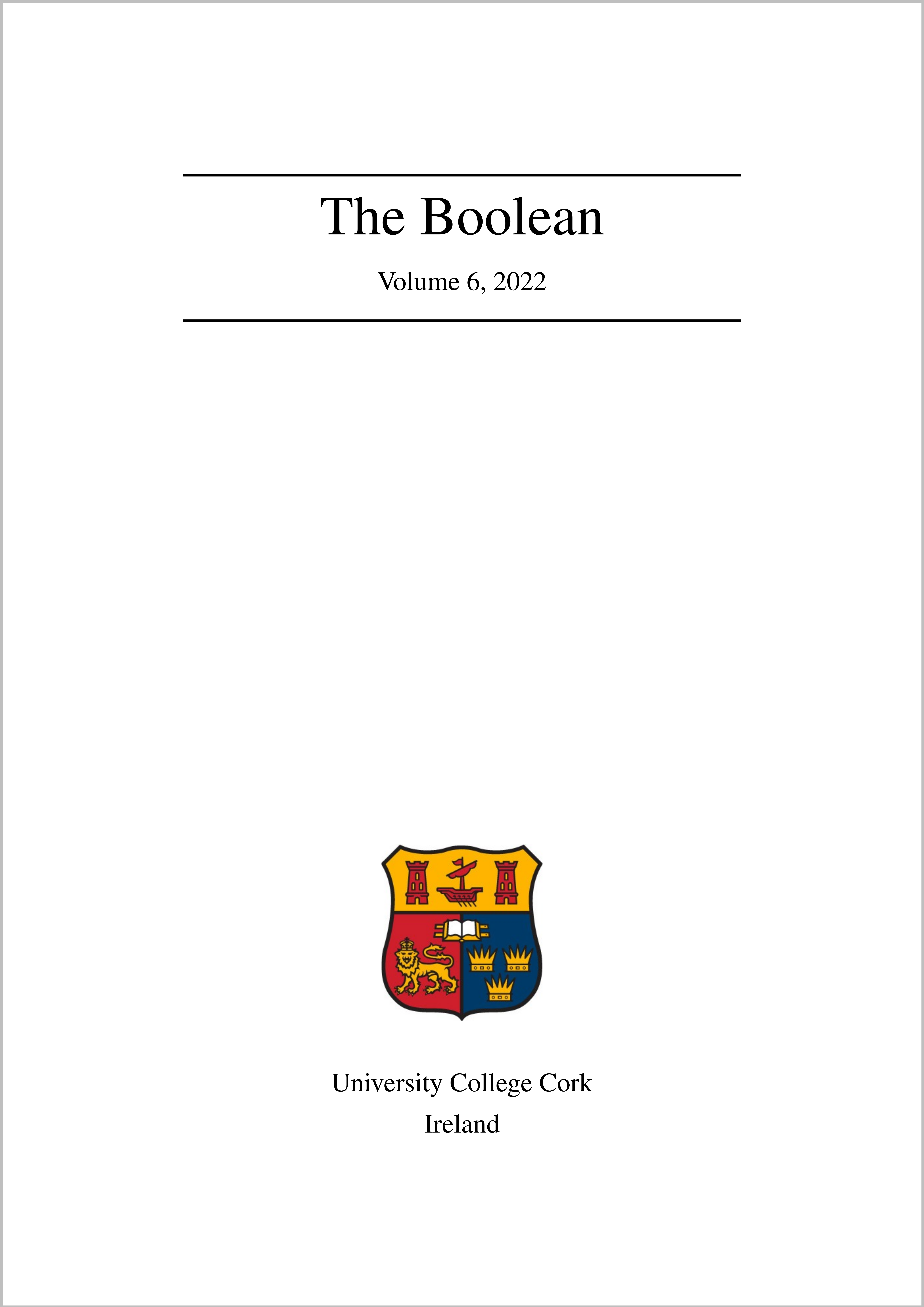UV LEDs and Their Applications
DOI:
https://doi.org/10.33178/boolean.2022.1.23Keywords:
semiconductor, fabrication, ultraviolet, light, biophotonicsAbstract
The purpose of this research is to design and develop a semiconductor light source emitting ultraviolet (UV) light. The final device will then be integrated into a biomedical application to assist clinicians in patient diagnosis. A light emitting diode (LED) is the specific UV source of interest, which has been the subject of major research and development over the past 20 years, with applications spanning surface disinfection to biomedical imaging. To realise the UV LED, the semiconductor structure must first be ‘grown’ which is a research area in and of itself. This project focuses specifically on taking the as-grown material of the LED and forming individual functioning devices, characterisation and then further optimisation of the growth. Challenges currently being faced include the physical constraints (electrical and optical properties) of certain materials, and extracting as much UV light as possible from the device. With 2 years left in the project, these challenges will hopefully be overcome to produce a high efficiency UV LED, integrated into a biophotonics diagnostic tool.
References
UVC LEDs: one solution to contain the COVID-19 pandemic. http://www.yole.fr/UV LEDs MarketUpdate.aspx.
Jean Cadet and Thierry Douki. Formation of UV-induced DNA damage contributing to skin cancer development. Photochemical & Photobiological Sciences, 17(12):1816–1841, 2018.
Sophia Colantonio, Michael B Bracken, and Jennifer Beecker. The association of indoor tanning and melanoma in adults: systematic review and meta-analysis. Journal of the American academy of dermatology, 70(5):847–857, 2014.
Farzad Fereidouni, Ananya Datta Mitra, Stavros Demos, and Richard Levenson. Microscopy with UV Surface Excitation (MUSE) for slide-free histology and pathology imaging. In Optical Biopsy XIII: Toward Real-Time Spectroscopic Imaging and Diagnosis, volume 9318, pages 46–51. SPIE, 2015.
Shuji Nakamura, Takashi Mukai Takashi Mukai, and Masayuki Senoh Masayuki Senoh. High power GaN pn junction blue-light-emitting diodes. Japanese Journal of Applied Physics, 30(12A):L1998, 1991.
K Oguma. Deep UV LED equipment in operation for municipal drinking water supply. UV Solutions 2020 Quarter3, Int. Ultraviolet Association, 2020.
Seung-Taek Oh, Seuc-Ho Ryu, and Jae-Hyun Lim. Development of safe UVB-LED special lighting to support daily recommended vitamin D synthesis: convergence approach of health and UVB-LED lighting. Personal and Ubiquitous Computing, pages 1–8, 2021.
Minamata Convention on Mercury. Minamata Convention on Mercury. 2019. https://www. mercuryconvention.org/en.
J O’Neil. Review on Antibiotic resisitance. Antimicrobial Resistance: Tackling a crisis for the health and wealth of nations. Heal. Wealth Nations, pages 1–16, 2014.
Bernd Seme and Ingolf Streit. UVB LEDs for Medical Phototherapy: LEDs have the potential to become the light source of the future for targeted UVB phototherapy. PhotonicsViews, 16(5):34–37, 2019.
Yuewei Zhang, Sriram Krishnamoorthy, Fatih Akyol, Jared M Johnson, Andrew A Allerman, Michael W Moseley, Andrew M Armstrong, Jinwoo Hwang, and Siddharth Rajan. Reflective metal/semiconductor tunnel junctions for hole injection in AlGaN UV LEDs. Applied Physics Letters, 111(5):051104, 2017.
Downloads
Published
Issue
Section
License
Copyright (c) 2022 Peter Milner

This work is licensed under a Creative Commons Attribution-NonCommercial-NoDerivatives 4.0 International License.



